This article may contain affiliate links.
Updated: August 24, 2025
Thailand has a tropical climate with warm temperatures year-round and a monsoon season that lasts several months. In this article, I’ll share everything you need to know to help you decide when to visit Thailand and make the most of your trip.
Climate in Thailand
The climate in Thailand can vary depending on the time of year and the region you’re in. In this section, I’ll give you an overview of the general climate across the country, and in the next section, I’ll break down each region in more detail to help you plan your trip.
Thailand’s seasons are typically divided into two main periods: the dry season and the rainy season. Temperatures can also be categorized into the hot season and the cool season, although in some areas, the temperature doesn’t vary much.
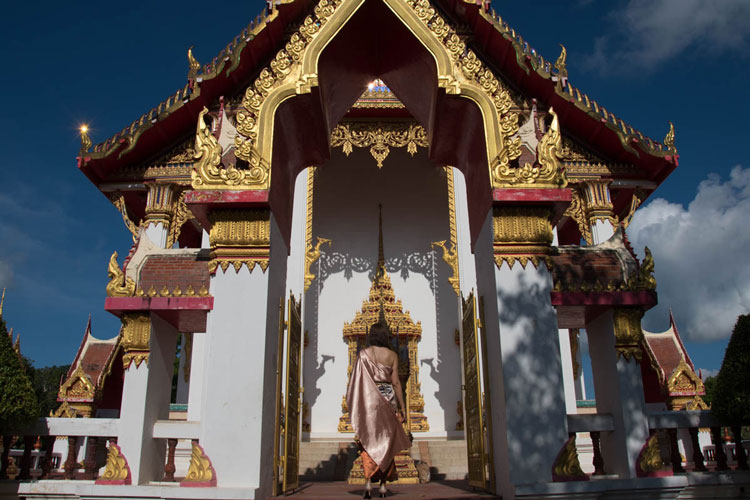
Dry Season: From January to March
This is considered the best time to visit Thailand if you want to enjoy the beaches and islands in the south.
Rainy Season: From May to November
The rainy season, or monsoon season, is typically marked by heavy but short bursts of rain that leave the air feeling fresh afterward. It’s more of a fresh feeling, though, not that the temperature drops—the contrast comes from the heat and humidity before the rain.
If you don’t mind the rain, the rainy season offers two benefits: lower prices and fewer tourists. Just keep in mind that some outdoor activities like hiking, visiting national parks, and boat trips may be canceled.
The rainy season can also vary by region, so if you’re flexible with your travel dates, I recommend avoiding the months with heavy rainfall, as they could cause flooding.
👉 Important Facts About the Rain:
- Rain usually lasts just a few hours; it’s rare to have all-day rain.
- Floods are uncommon, though there were some in 2024—this isn’t typical every year.
- The rainy season doesn’t start and stop suddenly; it’s more of a gradual transition over several months.
- The start and end dates of the seasons aren’t exact. Based on historical data, they can vary by days or even weeks each year.
- Thailand is a tropical country, so it rains year-round, but less so during the dry season. In the section by regions below, you'll find graphs showing rainfall month by month.
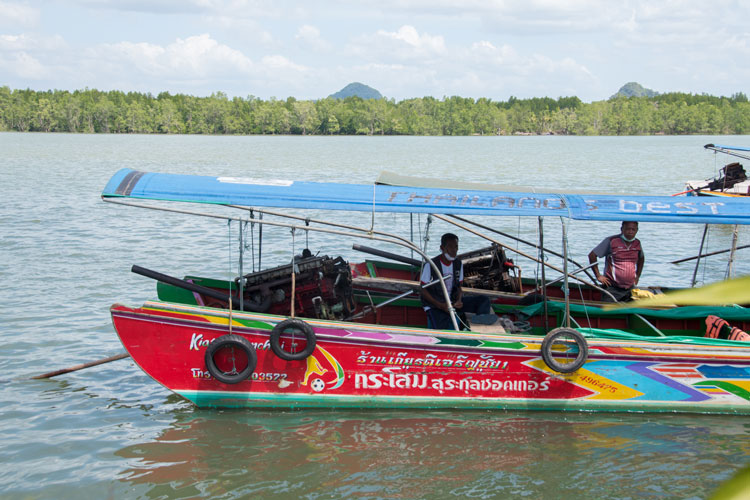
Hot Season: From March to May
Between March and May, Thailand hits its hottest period, with temperatures sometimes surpassing 35°C. While it’s not the best time to visit if you’re sensitive to heat, it’s ideal for spending time on Thailand’s beaches or islands, where you can always cool off in the sea. Plus, in southern Thailand, the temperature rise is more subtle.
Cool Season: From November to February
This season has the most pleasant temperatures in the north and central regions, making it the perfect time to visit the cities.
Summary of the seasons
In short, the best months to visit Thailand are from December to February, which combine the dry season with pleasant temperatures.This is the ideal time for outdoor activities, beach trips, and island tours. It’s also much more comfortable to explore cities like Bangkok, Chiang Mai, and the rest of northern Thailand without extreme heat.
If you're planning to travel around Thailand, this is the most comfortable time to explore the whole country.
👍 My two cents: If you’re looking to stay connected during your trip, 🤳 I recommend this eSIM for Thailand with unlimited data and work perfectly. Just use that link for a 5% discount. If you're looking for a budget-friendly alternative, this other eSIM starts at 4 euros.
Climate by Region
Since Thailand is such a large and diverse country, the best time to visit really depends on where you're going. Here’s a breakdown for each region:
1. Bangkok and Central Thailand
- Dry Season: November to April.
- Monsoon: May to October, with the heaviest rain in August and September, when flooding is more likely (as shown in the chart below).
- Cool Season: November to February. Temperatures drop slightly during the day and night.
- Hot Months: March to May, with temperatures often exceeding 35°C.
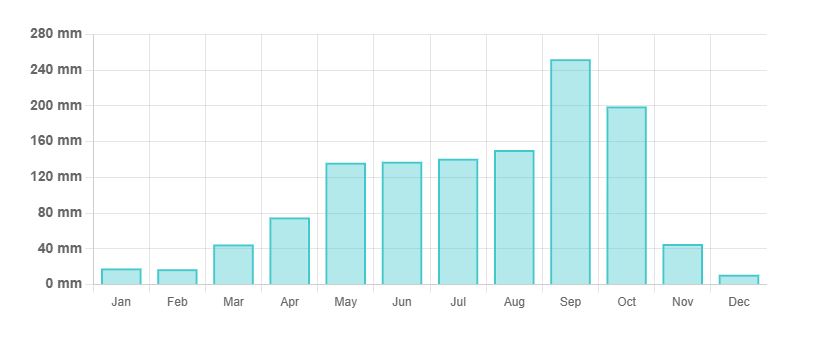
The best time to visit Bangkok and central Thailand is from November to February.
During these months, the heat is more manageable, and the humidity isn’t as intense, making it more comfortable to explore the city, wander through markets, and visit temples.

2. Chiang Mai and Northern Thailand
- Dry Season: November to April.
- Monsoon: May to October, with the heaviest rain in August and September, increasing the risk of flooding.
- Cool Season: November to February. December and January are the coldest months. Daytime temperatures are around 30°C, but they can drop to 10°C at night in the cities and even lower in the mountains.
- Hot Months: March to May, with temperatures often exceeding 35°C.
- Burning season: December to April, with February to April being the worst months (more on this below).
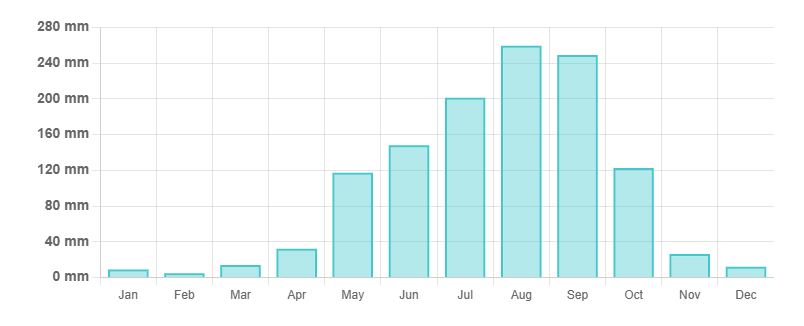
In summary, the best time to visit Chiang Mai and northern Thailand is from November to January. Which combine the dry season with cooler temperatures, and you’ll avoid the worst of the burning season.
These months are perfect for exploring cities and hiking in the mountains.
👍 Friendly Tip: If you’re heading into the mountains early in the morning in December or January, pack a jacket. Trust me, I worn just a t-shirt and a long-sleeve shirt and froze at the start of my hike.
3. Andaman Coasts
- Dry Season: December to March
- Monsoon: May to October. Rainfall stays pretty consistent throughout these months.
- Temperatures: Generally stable throughout the year, except in Krabi’s mainland area, where temperatures rise from January to May.
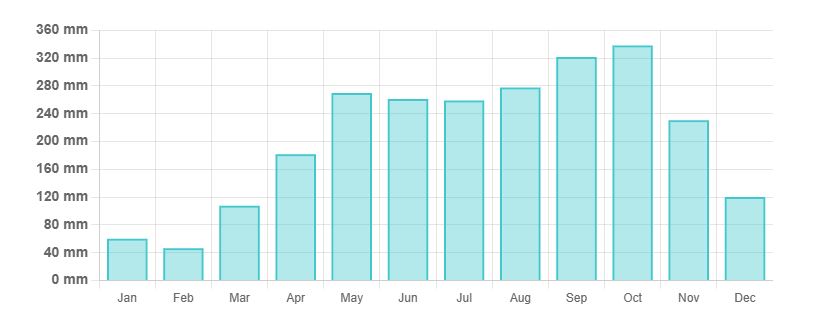
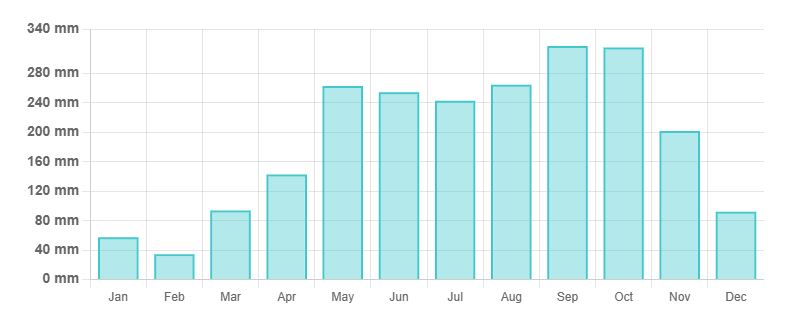
The best time to visit Phuket, Krabi, Koh Phi Phi, and other Andaman destinations is from December to March. During these months, the weather is ideal for enjoying the beaches, snorkeling, diving, and exploring the islands.
From May to October, the rainy season affects the Andaman coast, with frequent rain and the possibility of tours being canceled. In Phuket, the waves get too high for swimming or snorkeling, but it's perfect for surfing.

4. Gulf of Thailand (South)
- Dry Season: January to August
- Monsoon: September to December, with the heaviest rains in October and November.
- Temperatures: Fairly constant throughout the year, slightly cooler from October to February, and warmer from April to July.
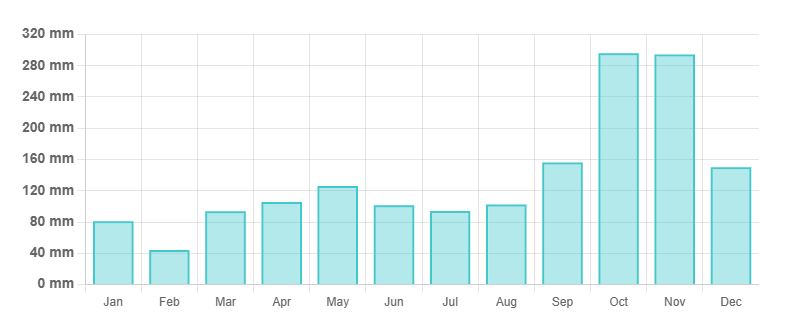
The best time to visit Koh Samui, Koh Phangan, and Koh Tao in the southern Gulf of Thailand is between January and August, when the weather is sunny, and rainfall is minimal.
This region has a different rainfall pattern than the rest of the country. The heaviest rains fall in October and November, which may lead to boat cancellations. But the rest of the year, the beaches are a perfect place to relax and enjoy the crystal-clear waters.
Monthly Monsoon Overview in Thailand
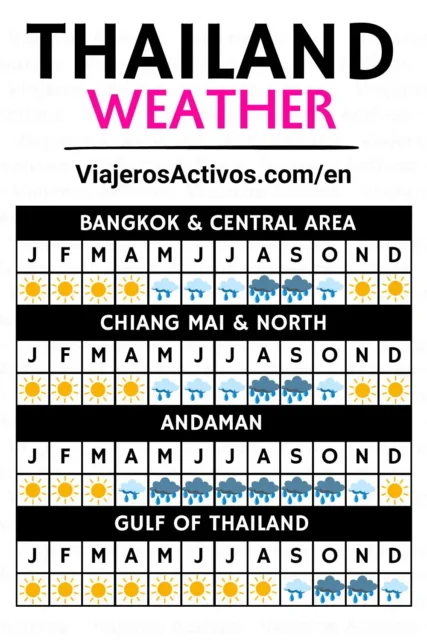
Climate Comparison by Region
| Thai regions | Dry Season | Monsoon | Cool Season | Hot Months |
| Bangkok & Central | November to April | May to October | November to February | March to May |
| Chiang Mai and North | November to April | May to October | November to February | March to May |
| Andaman | December to March | May to October | — | January to May (Krabi) |
| Gulf of Thailand | January to August | September to December | — | — |
🤑 If you want to save on your next adventure, use this link from Booking to get 15% off your stay.
Burning Season
The burning season, also known as the "smoky season," is when farmers burn fields to prepare them for crops before the rainy season.
It usually begins in December, with more farmers joining in as the months go by. This leads to the highest levels of pollution from February to April.
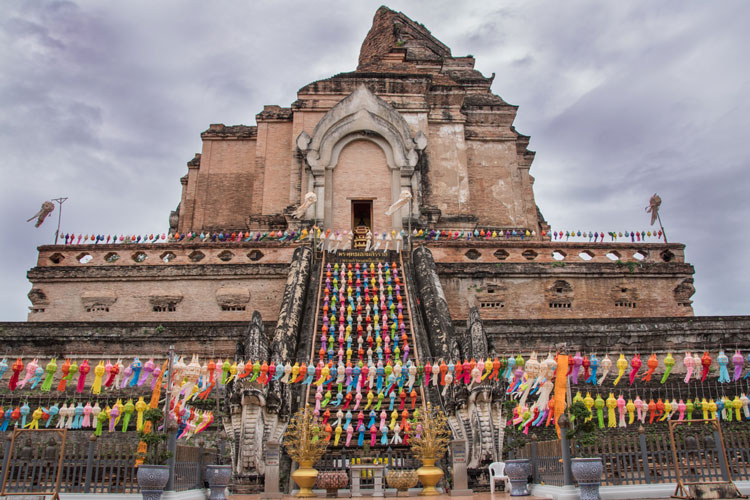
In northern Thailand, especially Chiang Mai, this is when the pollution can get so bad that it becomes the most polluted area on Earth, surpassing places like Bangladesh.
Although it's not something people often talk about, it's important to keep in mind if you have respiratory issues like asthma or bronchitis.
The smoke can seriously affect your breathing, especially when you're out sightseeing or hiking. I know this firsthand from living in Chiang Mai, and it was actually the reason I moved south.
If you don’t have respiratory issues, it probably won’t affect you too much.
How to avoid pollution effects
- Travel in another season:The dry season starts in November, before the burning season begins.
- Visit early in the burning season.The longer you wait, the worse the pollution gets.
- Wear an N99 mask outdoors to filter the pollution particles, or at least an N95. If you visit during the peak of the burning season, you'll see how black your mask gets once you take it off. 😷
Events & Festivals in Thailand
Thailand is known for its vibrant festivals and cultural events that can make your trip even more special. Here are some of the most famous ones:
- Songkran (Thai New Year): Held from April 13 to 15, this is Thailand's most famous and fun festival. Celebrations include water fights in the streets, parades, and traditional rituals. Be prepared to get soaked!
- Loy Krathong: Celebrated in November, during this festival, Thais release small decorated rafts with candles and flowers into rivers and ponds across the country.
- Yi Peng: , during this festival, Thais release small decorated rafts with candles and flowers into rivers and ponds across the country.
- Vegetarian Festival: Held in October, mainly in Phuket, this festival is famous for its unique rituals and processions. Participants follow a strict vegetarian diet and engage in purification acts. In this Phuket article you can read more.

Keep in mind that Thailand follows the lunar calendar, so festival dates change each year, except for Thai New Year.
FAQs
There’s generally no bad month to visit Thailand, but here are some periods you might want to avoid based on your preferences:
– August to October: Heavy rains affect most of the country, with possible floods.
– October and November: The heaviest rains hit the southern Gulf coast.
– March to May: The hottest months in central and northern Thailand.
– February to April: The burning season in northern Thailand, when pollution levels are at their highest.
High season in Thailand runs from November to March. This is when you'll find more tourists, and prices may be higher, especially in popular spots like Phuket and Krabi.
Low season in Thailand is from May to October. It’s a great time to avoid crowds and save money. However, you’ll need to be flexible due to possible weather-related cancellations, but the atmosphere is much more relaxed and less crowded.
If you're looking for a beach vacation, note that the monsoon affects the Gulf and Andaman coasts differently, so you can still enjoy sunny weather in some areas.
✅ Friendly Tip: Don't forget to take out travel insurance for your next adventure. I recommend Heymondo which is the most complete, and with that link you have a 15% discount Until December 1st!
Final Thoughts
In conclusion, the best time to visit Thailand depends on your preferences. If you want perfect weather and comfort, go between December and February. If you'd rather avoid crowds and save on costs, the rainy season is a good option—just be ready for some cloudy or rainy days.
Traveling to Thailand can be an amazing experience any time of year as long as you're prepared and choose the right time based on your interests and the weather. I hope this guide helps you plan your trip!
In this guide to Thailand you can keep reading the main articles I’ve written about this beautiful country.
If you have any questions, leave me a comment below and I'll help you as much as I can. If you found the article useful, share it with other travelers. Have a good trip! 😘
More about Thailand

Hi, I’m Andrea, creator and author of Viajeros Activos (Active Travelers). I write about Southeast Asia, the Caucasus, and Europe. I’m a full-time traveler, passionate about good food, and always looking for new adventures.



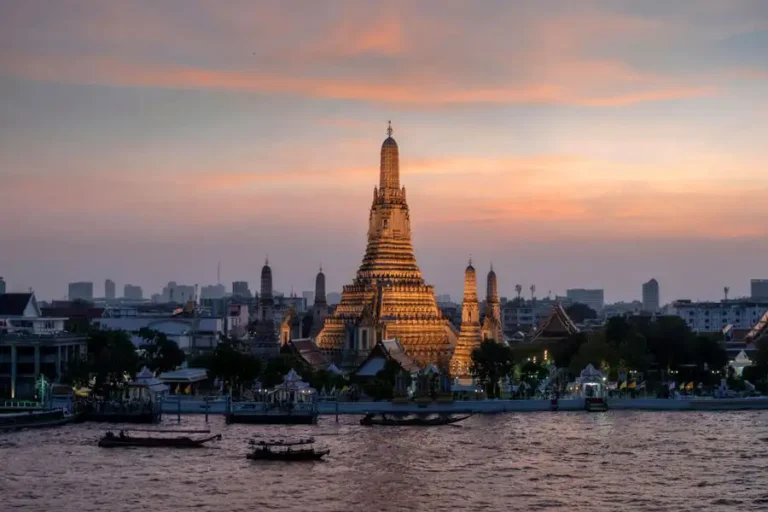


Thanks for the guide, it makes the trip and knowledge of places easier.
I'm glad it helps you, Guillermo.
Thanks for your comment and have a good trip!
Thank you very much for the information, it helps us a lot to choose the appropriate date to travel to Thailand.
I'm glad you find it useful Lidia and thanks for your comment. 🙂
Have a good trip!
Hello. The information was very useful for me in deciding on travel dates. Several companies have told me that March is the best time to travel. But since I want to go trekking in Chain May, it is not a good time.
I would also like to see green rice terraces but I don't know if November would be good. If possible I would like your opinion. Thanks
Hello Ivana!
I also tend to recommend March as one of the best months in terms of weather, but that is generally true for the whole country. As you have seen, the weather varies by region and depending on what you want to do. I am glad that the information helps you decide according to your plans.
Regarding rice fields, please note that in Thailand most are grown on flat land, not terraced. Although there are some terraces, such as in Mae Klang Luang on Doi Inthanon.
In November, the dry season begins in the north and, therefore, the harvest season. During this month, the colour changes from deep green to golden. To see them in green, it is best to travel at the beginning of the month and, if you can, even a little earlier, as they are beautiful in mid-October.
Have a good trip!
Hello, good afternoon. I'm reading your suggestions for traveling to Thailand. We have a ticket for September 25th. Besides visiting temples and seeing the culture, we want to visit the beach in Phi Phi and Phuket. Based on what I saw of the weather during those rainy months, will we be able to? Thanks for the info.
Hi Claudia
Yes, during the rainy season you can go to the beach.
You'll just have to travel with patience and flexibility in case you need to change your itinerary.
Another thing you might be interested to know is that Maya Beach will be closed throughout August and September. The government announced this at the beginning of 2025. Phi Phi is still worth a visit. Tours take you to Maya Bay, but they don't go all the way to the beach, and there are several swimming spots afterward. If you visit Phi Phi in October, you'll have no trouble visiting the beach.
Have a good trip!